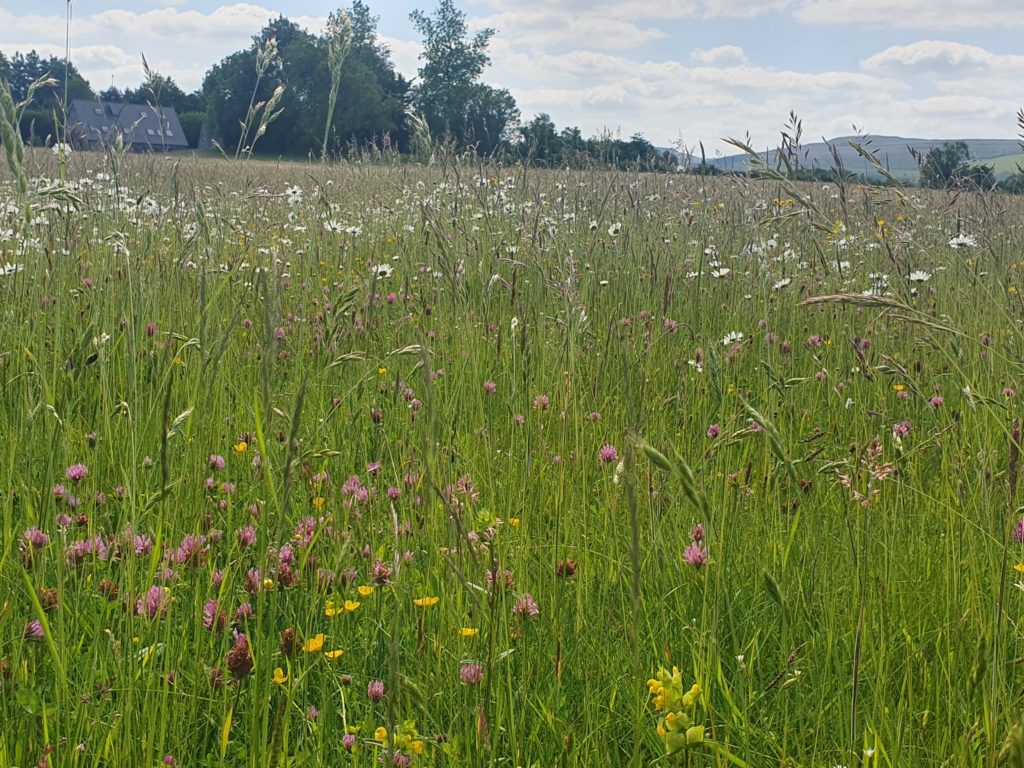Client: National Parks and Wildlife Service

The monitoring of three EU Annex I grassland habitats was undertaken from 2015 to 2017 and 2021 to 2023, to collect data that were used to assess their current conservation status. The three monitored Annex I habitats were Semi-natural dry grasslands and scrubland facies on calcareous substrates (Festuco-Brometalia) (6210) important orchid sites (*6210), Molinia meadows on calcareous, peaty or clayey-silt-laden soils (Molinion caeruleae) (6410), and Lowland hay meadows (Alopecurus pratensis, Sanguisorba officinalis) (6510).
The Annex I Grassland Monitoring Survey (GMS) built on the research undertaken by BEC Consultants during the baseline Irish Semi-natural Grasslands Survey (ISGS) of O’Neill et al. (2013). During the GMS 2015-18 110 sites that were surveyed during the ISGS were monitored. For the GMS 2021-23 132 areas of Annex I grassland habitat across 116 sites were visited. Of these 132 areas of Annex I habitat, 87 (66%) had been monitored during GMS 2015-17, with 26 areas (20%) last monitored during the ISGS and 19 (14%) new areas of target Annex I habitat that had not been monitored previously using the methodology in O’Neill et al. (2013).
The most recent monitoring data from the 2021-23 survey shows that for the 6210/*6210 habitat 19% (11 sites) of the 57 sites surveyed had an overall conservation status of Favourable, this is a decreasing trend compared with the GMS 2015-17. There was a nett loss of 6210/*6210 habitat since the baseline ISGS survey of 65.1 ha, representing a loss of 20% of the original area present in the baseline. For the 6410 habitat 14% (6 sites) of the 42 sites surveyed had an overall conservation status of Favourable, this is a decreasing trend compared with the last round of monitoring. The nett loss of 6410 habitat was 32.1 ha, representing a loss of 15% of the original area surveyed in the baseline. For the 6510 habitat 24% (6 sites) of the 25 sites had an overall conservation status of Favourable, this is an increasing trend compared with the GMS 2015-17. Overall there had been a nett increase of 11.8 ha of 6510 since the baseline survey, representing a 14% increase in the habitat area.
The main drivers of the decreasing trend in the conservation status of the 6210/*6210 and 6410 habitats are agricultural improvements, such as reseeding and fertiliser application, or conversely abandonment and undergrazing. Although the 6510 habitat has an increasing trend there are still negative pressures acting on the habitat, particularly agricultural improvement and the application of fertilisers.
The data collected during both the GMS surveys form the basis for a national conservation assessment for all three Annex I grassland habitats.
Citations:
Martin, J.R., O’Neill, F.H., Daly, O.H. and Woods, K.M.S (in press) The monitoring and assessment of three EU Habitats Directive Annex I grassland habitats 2021-2023. Irish Wildlife Manuals, No. 1xx. National Parks and Wildlife Service, Department of Housing, Local Government and Heritage, Ireland.
Martin, J.R., O’Neill, F.H. and Daly, O.H. (2018) The monitoring and assessment of three EU Habitats Directive Annex I grassland habitats. Irish Wildlife Manuals, No. 102. National Parks and Wildlife Service, Department of the Culture, Heritage and the Gaeltacht, Ireland